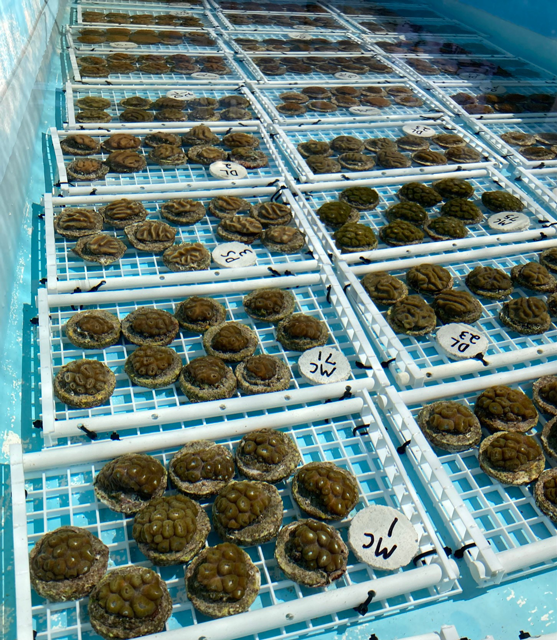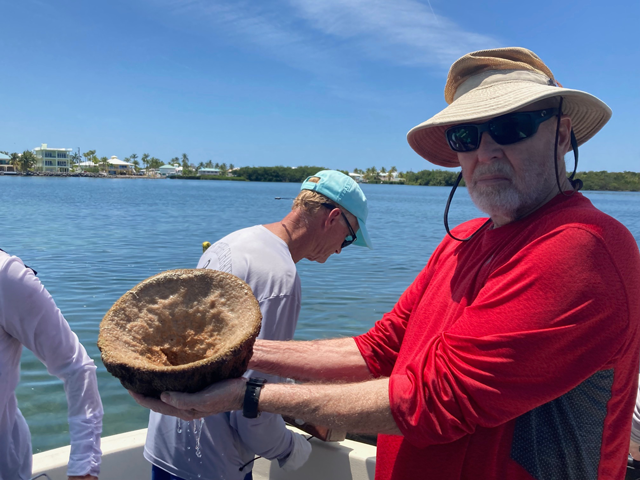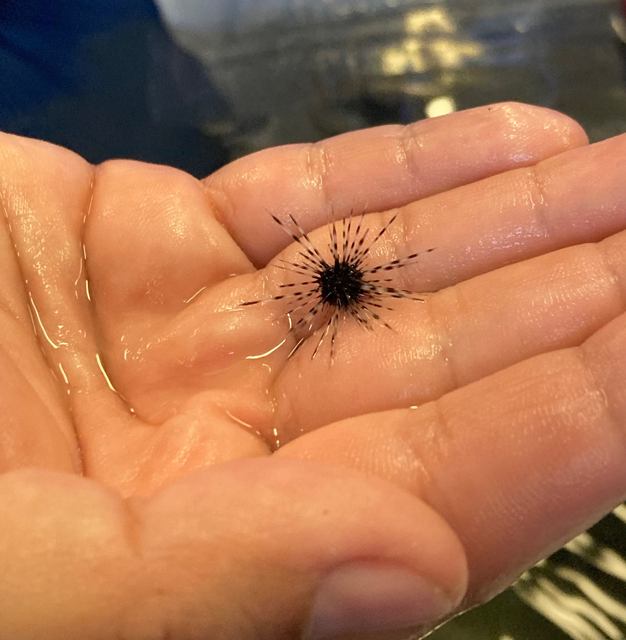Seeing is believing and adult students in Marine Discovery Center’s Marine Habitat Restoration class got that opportunity recently when they traveled to the Florida Keys for field studies.
Offered by MDC for the third year as a special topics class in the Florida Master Naturalist Program, the students spent two days snorkeling and seeing coral and sponge restoration efforts up close with visits to Mote Marine Laboratory in Summerland Key and FWC’s South Florida Regional Lab in Marathon. They learned how restoration is implemented, managed and monitored by each facility — boarding boats for field trips each day to observe restoration in progress.
Students observed that coral had been cut into smaller pieces by scientists at Mote Marine Lab and epoxyed onto discs to be grown in a lab setting. Once the coral cuttings had grown, they were then outplanted onto living natural reefs and monitored throughout maturation.
They also learned that Mote’s lab enables scientists to manipulate different water conditions — such as salinity and water temperature — to determine how corals respond to changes in their natural habitat.
The second day at Florida Fish & Wildlife Conservation Commission (FWC) focused on sponge habitats in south Florida and the challenges facing that species. Students learned that while sponges may be the simplest form of life on earth, they are immensely valuable to the coastal ecosystem because of the amount of filtering they provide in coastal waters.
Sponges also serve as habitat for crabs, lobsters and snapping shrimp. When environmental factors impact Florida’s six predominant sponge species and they are lost, the cohabiting animals disappear.
Just as corals have been adversely affected by record 95-degree water temperatures, sponges also have succumbed to intolerable conditions. Cyanobacteria blooms have wiped out many of Florida’s sponge communities since 2013.
Other students remained on the boats, working alongside the scientists. They were instructed how to slice the harvested sponges into smaller pieces, which were zip-tied onto bricks and pavers. The sponge-tied bricks then were returned by snorkeling students to the ocean floor, where the sponges will grow and continue to be monitored by FWC scientists.
Both laboratory facilities also look at animals that share the coral and sponge habitats. Long-spined urchins (Diadema), fish, lobsters and snapping shrimp make those habitats home. When the coral and sponges disappear due to impacted water conditions, so do the animals that live there.
But the overall takeaway for students in the Marine Habitat Restoration class was the difficulty of and need for restoration, as well as the serious ecosystem challenges of extreme ocean water temperatures and bacterial blooms. Coral and sponge communities both have dramatically declined in recent years, giving students a greater understanding of how restoration is largely attempting to stay a step ahead of devastation.





Follow Us!